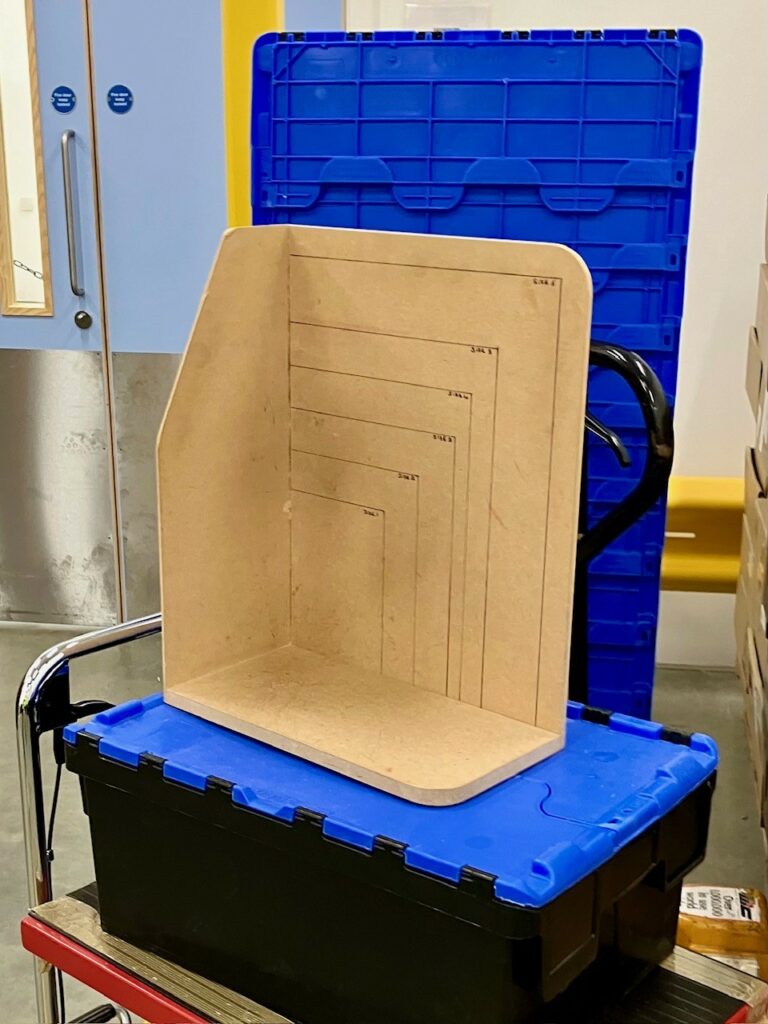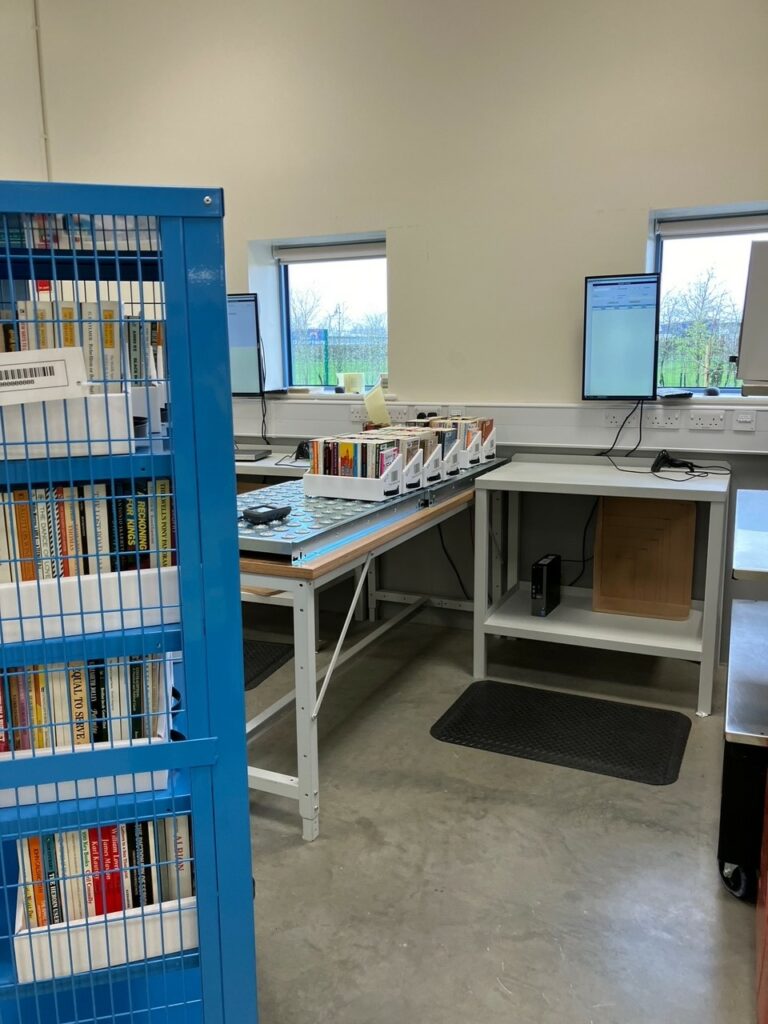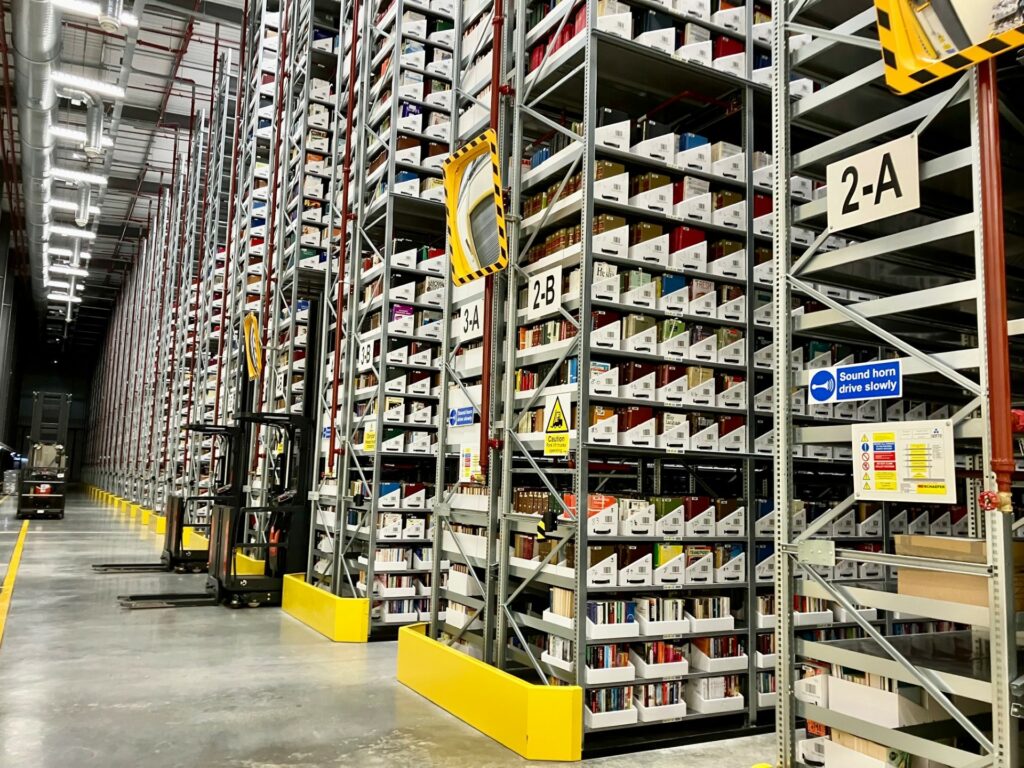After a quick lunch and short walk to see the outside of Ely’s cathedral, we headed to the Cambridgeshire Archives, a former bowling alley that has been expertly converted into an archive centre. The Archive holds records dating back to the 13th century, relating to the area now covered by Cambridgeshire (which includes Huntingdonshire and the Isle of Ely).

The archivist began our tour in the strong room, pointing out the features which made the former bowling alley an ideal space to store archives, such as the easy access areas and lack of windows. As the interior was renovated prior to the archives being moved to the new site, they were able to ensure the space could be completely functional for storing special records, with systems in place to keep the temperature at a constant 19°c and the humidity at 50%. This also included setting up a small quarantine room just as you enter the storage area, where newly received documents are initially taken to be checked for possible risks, such as mould or silverfish – pests you definitely don’t want in your archives!
Most of the records are kept in boxes on mobile shelves, with enough space to hopefully last for the next 25 years. The archivist explained that they try to place highly requested items on the front shelves, such as parish records and maps, to ease accessibility. With many of the items being official records for the county, and therefore irreplaceable, they also have to maintain good security. In total, the Archive currently holds 20 million documents in approximately 35,000 boxes – the weight of 171 elephants we were told!

After finishing our tour of the storage area, we were shown into the Archive’s conservation room, full of contraptions and equipment to clean, preserve and restore archival items. For example, stretched out on the table was an early 17th century map, which the team were flattening and cleaning prior to it being digitised.
This posed a good segue to the next space we were led into, the digitisation and scanning room. The Archive employs a professional photographer to create high quality digital images of the collection, providing a useful income stream as they prioritise digitising requested items. The photographer had just finished a digital image of the Cromwell family tree from the 16th-17th century – the original document is huge, and so the photographer had stitched multiple images together to create a seamless, high-definition digital copy.
Following the digitisation room, we also dropped in on the Cataloguing and Accessioning team, where we discussed the Archive’s policies on collection storage and their use of CALM catalogue – an archive management system. It was interesting seeing the similarities and differences between how they catalogue archival material, and our own experiences with cataloguing books using library management systems.

Finally, we ended our tour in the reading room, and chatted with the archive assistants about their roles and the kinds of queries they deal with. Their jobs involve copious amounts of research and detective-like work, such as tracing ancestors, finding family archives, and uncovering information needed for land disputes.
Helping families and the local community is a key function of the team, and the archivist mentioned how the image of archives has changed from formerly being a space for academics, to now being open and welcoming to the public. For instance, the Archive runs numerous outreach activities with school groups, taking them on tours of the space and putting out a ‘wow’ display of items, such as letters from famous people, and (always popular) the smallest and biggest items held in the collection. The archivist had kindly prepared a ‘wow’ table for us in the reading room too, showcasing the plethora of material that Cambridgeshire Archives owns. This ranged from a collection of late 19th century mugshots featuring local people accused of crimes, to documents dating from 1855 relating to Cambridge Free Library, and also a collection of notes on nineteenth century Whittlesford and its neighbourhood by local antiquary and natural historian George Nathan Maynard. A particular favourite of all the trainees was a spectacular hand illustrated history of Little Shelford by Fanny Lucretia Wale, compiled between 1908-1919, which featured beautiful watercolour images of the local area.


Thank you to the team at Cambridgeshire Archives for giving us such a lovely tour, and for providing us with an insight into the work that local archives do!












